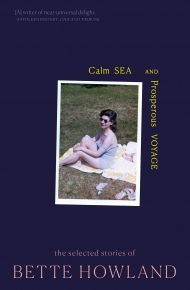Reading Jesmyn Ward’s Salvage the Bones
October 1, 2013
This article originally appeared on October 18, 2011.
A recent review of Salvage the Bones considers the novel in the context of a Salon essay about Modern Steinbecks. These novels, the reviewer suggests, “play into the exoticization of lives unlike those of readers who are inclined to pick up literary fiction.”
Salvage the Bones, like her stories “Cattle Haul” (APS 5) and “Barefoot” (APS 14), is set in rural Mississippi (the state with the greatest percentage of poor people in the nation, and one of the top ten in terms of income inequality). It takes place in the days before Hurricane Katrina. The narrator, Esch, fifteen and pregnant, lives with her three brothers and father in a clearing in the woods they call the Pit.
Chaos Manor
Sam Stephenson • October 1, 2013
This article originally appeared on September 13, 2011.
821 Sixth Avenue was a hub for jazz musicians from 1954-1965, and many big names in New York found themselves there. The photographer W. Eugene Smith moved into the building in 1957 and eventually wired the place, intent on recording as much of the rehearsals, jam sessions, conversations, and daily life in the loft as possible. The result, though vast (40,000 photographs and 4,500 hours of audio recordings), accounted for a sliver of what was going on culturally, artistically, and politically in the city during the time. Explore a selection of significant spots on the map below.*
Excavating a Life: Part II
Sam Stephenson • October 1, 2013
This article originally appeared on September 13, 2011.
RK: Eugene Smith, your subject, was known to be an eccentric man. After so many years of researching Smith, what new insights did you learn about him during your time in Japan?
SS: There are a couple of things that come to mind. One is the fondness expressed for Smith, the really moving expressions that people made about him. Several of our interview subjects cried when talking about him.
Excavating a Life: Part I
Sam Stephenson • October 1, 2013
This article originally appeared on September 12, 2011.
Levon's saxophone from the third floor window reverberates up and down Bergen Street without amplification and the image of him through the window is impressive. The images are projected onto fabric hanging from the ceiling inside Invisible Dog's windows. With the figures moving between the projector and the fabric, it’s not unlike Smith's portrait of 821 Sixth Avenue with the silhouette cutouts. Pedestrians were stopped by curiosity and looked up at the building. A few lingered. A few people across the street closed their windows. When you add MLK giving a speech, Mr. Magoo commercials, Cuban Missile news, the drip of water, the typewriter typing, not to mention imagery...
What is it like to immerse oneself in another person's life?
Dead Darlings
Antoine Wilson • October 1, 2013
This article originally appeared on August 18, 2011. In which our favorite writers share precious little bits that didn’t quite fit.
I'm probably not the only writer in the world who, prior to killing his darlings, tortures them. For months, they bounce in and out of a CUTS folder, which works like a self-storage unit, holding things until I can admit they belong in the trash. And not because they are trash, intrinsically, but because the project simply refuses to contain them.
Playing House
Leslie Jamison • October 1, 2013
This article originally appeared on June 28, 2011.
During my second year at the Iowa Writers’ Workshop, I lived at 715 Iowa Avenue, Iowa City, Iowa. In case my friends on the coasts didn’t get it, my address had to say it three times: I’m in the middle.
Dorthe Nors: A Master of Conjunction
Fiona Maazel • October 1, 2013
This article originally appeared on January 28, 2011.
Welcome, people, to the work of Dorthe Nors. I met Dorthe last summer on a residency in Denmark. I’d been told the Danes are the happiest people on earth—they rank highest in the World Database of Happiness [ed: actually, a close second; Costa Rica takes the happiness prize]—and that Danish writers, in particular, are not afflicted with the same malaise, gloom, and despair that seem to beset their peers worldwide. Imagine my delight, then, to find in Dorthe an utterly morbid (and thus entirely winning) sense of humor, and in her bearing the same deadpan intelligence and compassion that motors her work.
I Wanted Both
Francis Spufford • October 1, 2013
This article originally appeared on February 1, 2012.
"This is not a novel. It has too much to explain, to be one of those. But it is not a history either, for it does its explaining in the form of a story; only the story is the story of an idea, first of all, and only afterwards, glimpsed through the chinks of the idea’s fate, the story of the people involved."
Yoni Wolf Listens to Poetry
October 1, 2013
This article originally appeared on April 29, 2010.
It’s probably safe to say that you’re the only songwriter I’ve ever come across who’s thrown in a quote from Marilyn Hacker. I’m curious what your relationship is to contemporary poetry or writing in general.
On Irrelevance: Part IV
Tom Drury • October 1, 2013
This article originally appeared on April 5, 2010.
Right now I'm reading Quincas Borba by Machado de Assis (1839-1908) and so I'll recommend another of his novels, and one of my favorites, Epitaph of a Small Winner. Originally published in 1880, it seems to me a conversation with an eternal present.
Page 13 of 15 pages ‹ First < 11 12 13 14 15 >
Back to Top

